Sunday 3 May 2009
Subspecies of Starlings
Anyway, on the way back from work today I saw a starling by the edge of the path, and I decided to look it up when I got back home. To my surprise I found that the common starling (Sturnus vulgaris) has no less than twleve valid subspecies. The one I had seen on the way home was Sturnus vulgaris vulgaris which is found over most of Europe.
I noticed that there is also a unique subspecies on the Faroe Islands. The Faroe Islands have several unique subspecies, which I should talk about at more length at some point.
The Shetland Islands also have their own subspecies, Sturnus vulgaris zetlandicus. The Shetland Islands are home to several interesting species which I should mention in a post at some point, but these include the St Kilda house mouse, and the Orkney Vole.
The other nine subspecies are spread across Europe and Asia, and I don’t really have that much to say about them, but there is a reasonably informative wikipedia article for those who are interested, http://en.wikipedia.org/wiki/European_Starling
See you later.
Saturday 2 May 2009
Scarborough Castle Butterflies
 Large White. Photo courtesy of me.
Large White. Photo courtesy of me. Close-up of a Large White. Photo courtesy of SJV.
Close-up of a Large White. Photo courtesy of SJV. 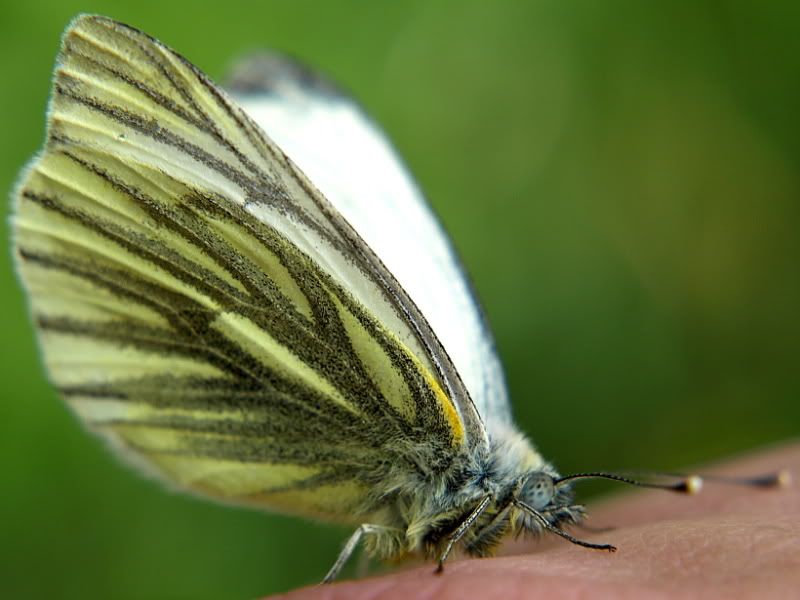
Green-veined White. Photo courtesy of SJV.
It didn't take us too long to see some of the other butterflies common at this time of year, small tortoiseshells abounded, as did small whites and speckled woods.
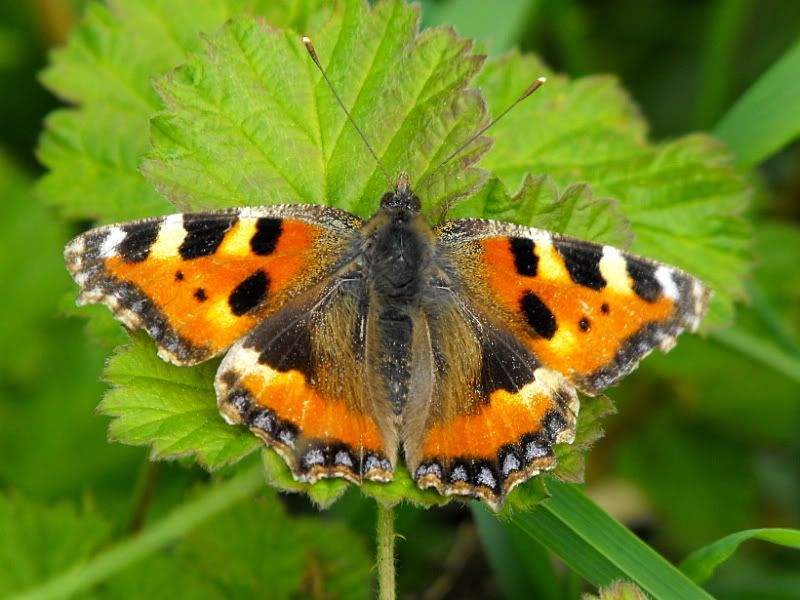
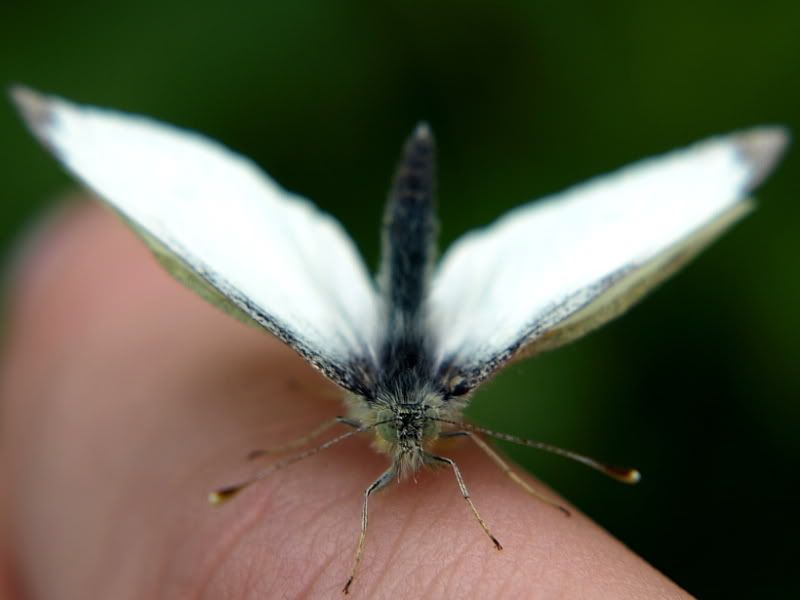
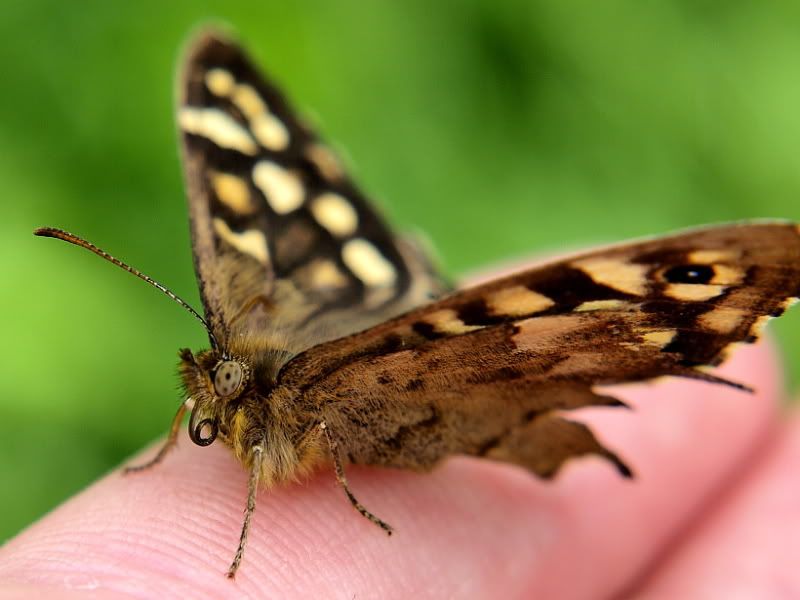 Speckled Wood. Photo courtesy of SJV.
Speckled Wood. Photo courtesy of SJV.We only saw one peacock, and after quite a chase I managed to get this photo:
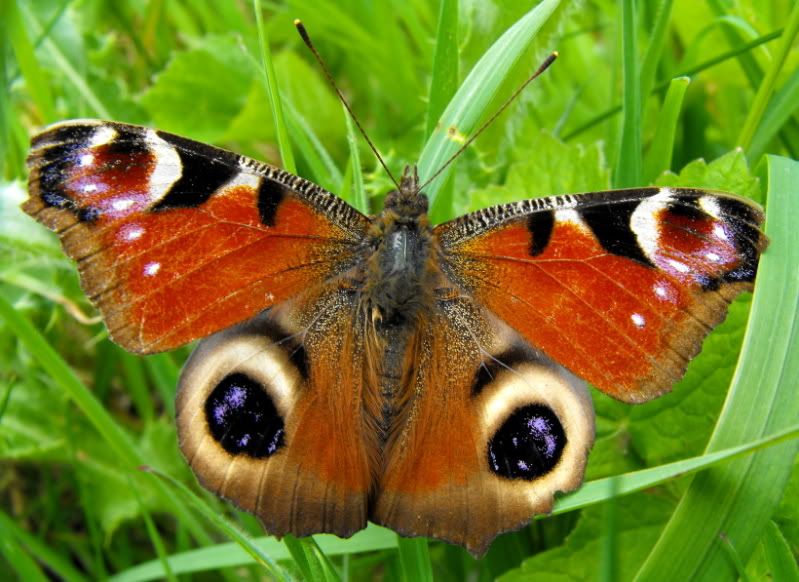
We were surprised to see on our way back a holly blue fluttering around some privet. This is the first holly blue I have seen in Scarborough.
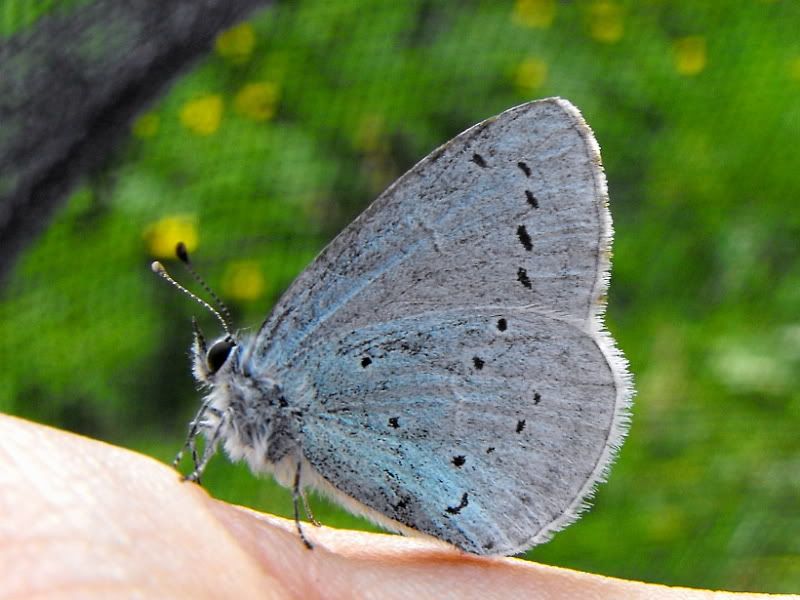
Holly Blue. Photo courtesy of me.
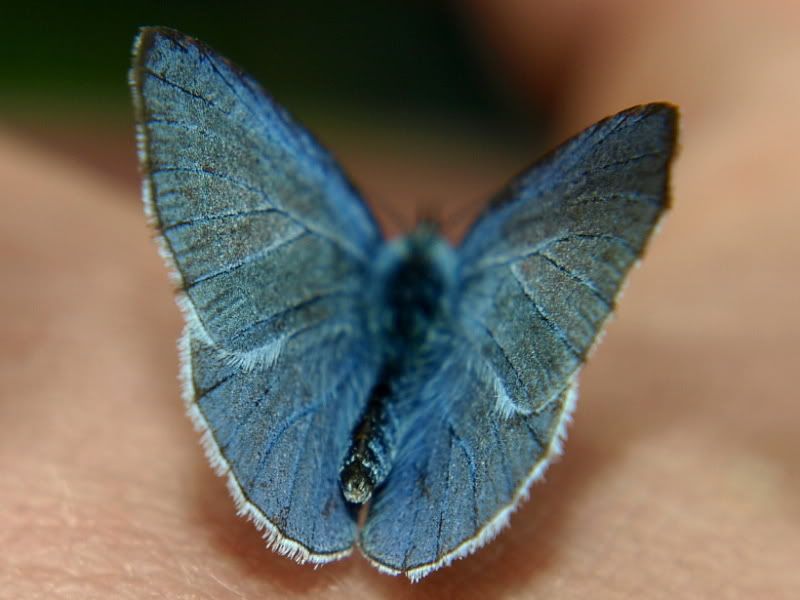
Holly Blue inner wings. Photo courtesy of SJV.
Seeing the holly blue was nice, as it means I have seen ten different species of butterflies so far this year. Strangely I didn't see a single comma today.
Friday 1 May 2009
Convergent Evolution - Example 1
The example I am going to give you today is about the evolution of spines for defense. Obviously the one that springs to mind is the hedgehog.
 West European Hedgehog. Photo courtesy of Wikipedia.
West European Hedgehog. Photo courtesy of Wikipedia.
There are sixteen species of hedgehog which are native to Europe, Asia and Africa, and all of these inherited their spiny defense from a common ancestor. However they are far from the only creatures to have evolved spines.
The Australian equivalent of the hedgehog is the echidna, or to be completely accurate, there are four echidna species all of which are found in New Guinea, and of these, only the short-beaked echidna is found in Australia. Nevertheless, whilst all four of these species will have inherited their spines from a common ancestor, this ancestor is vastly seperate from the common ancestor of the hedgehogs.
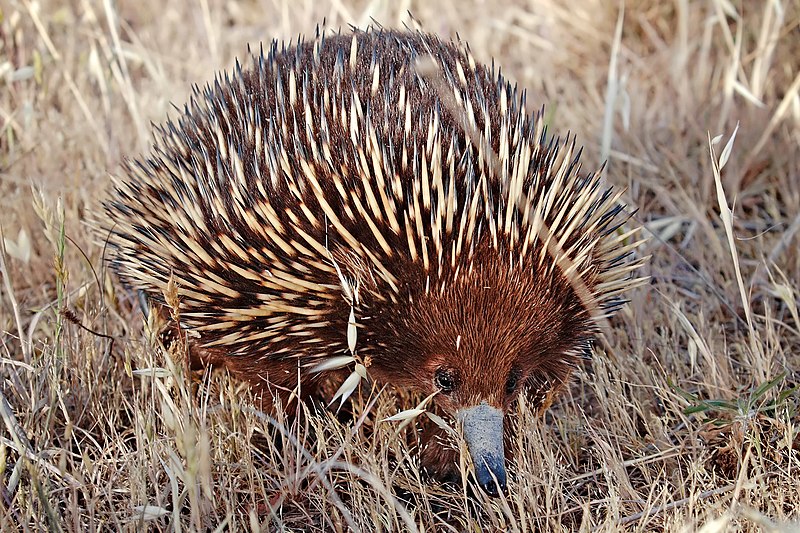
Porcupines also have defensive spines, and are not closely related to the previous two examples. There are eleven old world species of porcupine, and twelve new world species of porcupine. What is fantastically interesting about these two groups of porcupines is that it seems that spines evolved separately in the old world and the new world.
 Old World Porcupine. Photo courtesy of Wikipedia.
Old World Porcupine. Photo courtesy of Wikipedia.
New world porcupine. Photo courtesy of Wikipedia.
The last example I’ll give you are the tenrecs. Tenrecs are mostly confined to Madagascar, and there are two species that have defensive spines, the greater hedgehog tenrec, and the lesser hedgehog tenrec. These two species look just like stretched versions of the more familiar hedgehog.
Unfortunately I can't find any pictures that I can use, so I insist you visit this link:
http://www.americazoo.com/goto/index/mammals/36.htm
So there you have it, five groups of animals that have all independently evolved a similar defense strategy in different places in the world. I’ll hopefully be able give you some more fascinating examples of convergent evolution in future.
Bye now!
